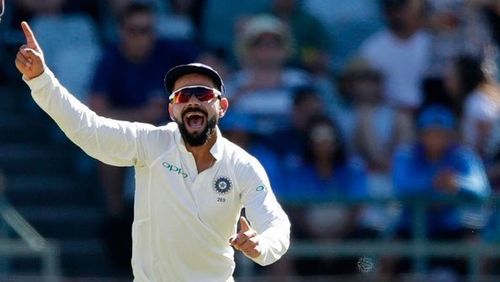
Is the Indian team becoming a victim of its own tactics?

If someone has followed the Indian cricket team closely for the last two years, the two words that have been used a lot in the press conferences are 'aggression' and 'intent'. It seems like the Indian team believes that a combination of aggression and intent is a panacea to all the problems surrounding them.
There is nothing wrong in being aggressive, just like showing intent is not a bad thing. But the recent performances from the Indian team are suggesting that they are so fascinated by these traits that they are forgetting the other ingredients required to make a successful dish of victory.
Is Shikhar Dhawan the right selection for South African conditions?
Shikhar Dhawan is an extremely talented batsman, one who can change the situation of a Test match in a session. But one can argue that his technique is ideally suited for conditions that are batting friendly. Dhawan is an integral part of the Indian Test setup as he fits ideally behind the adjectives 'aggression' and 'intent'.
India had an option to select KL Rahul, a player who is calmer and arguably technically superior to Dhawan, for the first Test.
But they went ahead with Dhawan, based on a couple of factors. One of them was the Indian cricket team's buzzword of the last year, 'current form' and the other was the variety he provides being a left-handed batsman.
Both these arguments are subject to scrutiny. Shikhar Dhawan's 'current form' is also against Sri Lanka and in conditions tailor-made for batsmen. Also, the variety he offers being a left-handed batsman is nullified by the fact that both Philander and Morkel are extremely effective against southpaws. Dhawan is also not a great player of short pitch bowling and it is a weakness which can be lethal in South African conditions. His dismissals in both the innings of the first Test point towards his poor technique against short pitch bowling.
KL Rahul has already shown his pedigree in alien conditions. His century against Australia in Sydney in 2015 was a rare shining light for India on that tour. He might not be as aggressive as Dhawan but arguably is better suited for South African conditions and would have been a more sensible selection.
Is current form a right criterion for selection?
Virat Kohli is a big fan of selecting players based on current form. It was evident in his first Test as a captain when he selected Karn Sharma ahead of Ravichandran Ashwin. The selection of Rohit Sharma ahead of Ajinkya Rahane in the recently concluded first Test was done on the basis of the hypothesis that current form supersedes past record.
But does 'current form' paint a complete picture? Selection based on only current form is as myopic a strategy as selecting a driver for a hilly terrain based on his performance on a plain surface. Rohit Sharma scored heaps of runs in the past 2-3 months but against an opposition that is probably going through its lowest trough in the past two decades and on tracks that are a nightmare for bowlers. Also, though not mentioned explicitly, his performances in the ODI series and T-20 series against Sri Lanka also played a part in his selection for the first Test. Rohit seemed like a fish out of water while batting against the South African pace attack in the first Test.
He was selected ahead of Rahane, who is arguably India's best batsman outside Asia. Maybe Rahane would have also grabbed a pair in those testing conditions but that doesn't justify his omission given his superb record in bowling friendly conditions and his supremely successful previous South African tour. If Rohit had scored a hundred in a practice match in South Africa and Rahane had faltered, then maybe the argument of 'current form' would have made sense but not in the given circumstances.
Was 'lack of intent' the real reason behind India's batting woes in the first Test?
Virat Kohli's post match conference after the first Test suggested that India could have shown more intent while batting. Though, it is true that players who succeeded in Capetown were the ones who were aggressive but it is an extremely small sample size to draw a conclusion.
All three of India's dismissals on the first day of the match could be attributed to 'over intent' rather than 'lack of intent'. Murali Vijay went for an uncharacteristic loose cover drive, Shikhar Dhawan went for a pull on an imaginary short ball and Kohli went for a back foot drive well away from his body. If India had weathered the storm that evening, maybe the outcome of the match would have been a lot different.
The next morning, Hardik Pandya batted the way he did, because he came into a tricky match situation in which he had nothing to lose and could freely express himself. Can Cheteshwar Pujara bat like Pandya, or rather should he bat like Pandya when he bats at a crucial number three spot? It is true that showing intent puts the opposition bowlers under pressure but as a lot of cricket pundits say, even a front foot defense on a spicy track is a shot of intent.
This Indian team possesses all the attributes required for succeeding away from home. But there is always a scope for improvement, maybe their current selection policies and approach towards a particular match situation are those areas of improvement. The good thing, though, is that they have a leader in Virat Kohli who is willing to experiment and will doubtless try everything to secure an elusive away series win.